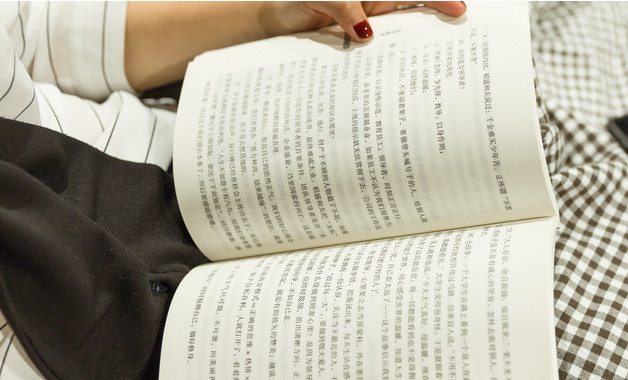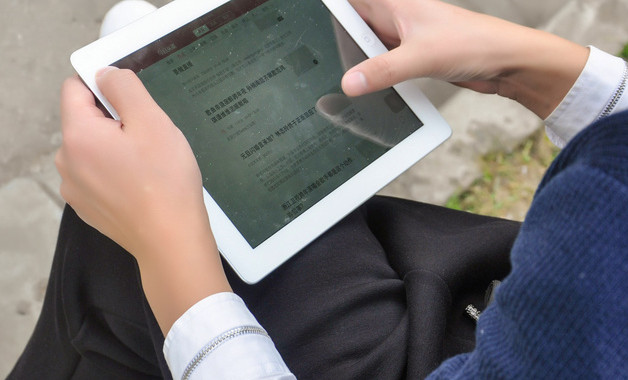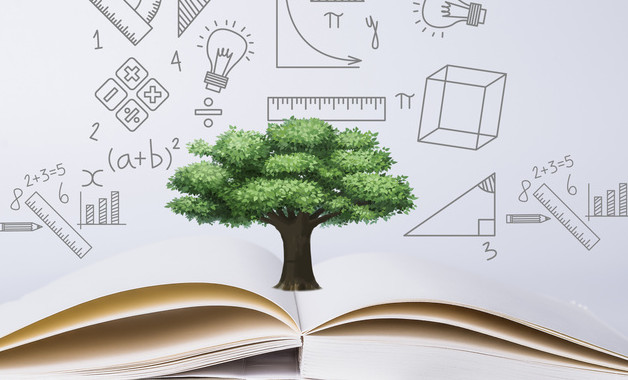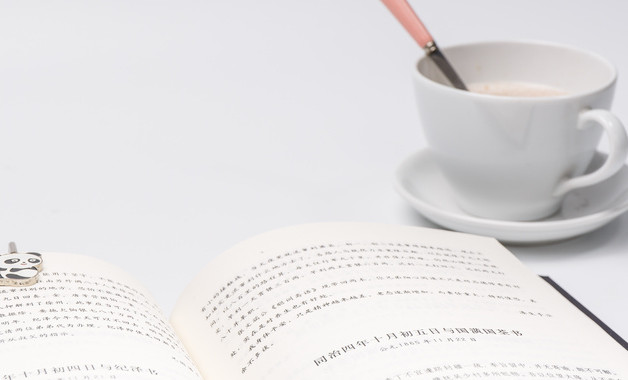
第1篇 诺贝尔奖得主莫迪亚诺演讲稿中文翻译
诺贝尔奖得主莫迪亚诺演讲稿中文翻译
我非常高兴能来到这里,也非常荣幸能获得诺贝尔文学奖。
这是我第一次不得不在这么多人面前发表演说,我多少觉得有得诚惶诚恐。人们觉得这类事情对于写作的人来说是轻而易举且顺其自然,可是对于一个作家——至少是小说家而言——演讲常常并不是那么容易的事。这就像学校课堂里区别书面和口头作业的差别,小说家更有写的才华,而不是说的本领。他已经习惯了保持安静,他演讲起来会吞吞吐吐,因为他早已习惯把自己的话删掉。在几遍的修改之后,他的表达可能变得明朗。但真的发言时,要修正那笨拙的语句就手足无措了。
这就是为什么我们中的一些人在演讲时一会儿踌躇迟疑,一会儿流利飞快好像我们等着随时被打断。这也是为什么我和许多人一样产生了写作的欲望,在童年结束的时候。你希望大人们会读你写的东西。也就是以那种方式,他们才会静下来听你说,也不会来打断你。同时,他们才会真的了解你的心声。
得知获奖的时候我觉得这很如梦如幻,我迫切地想知道为什么你们选择了我。就在那天,我才强烈地意识到一个小说家对自己的作品是多么得无知,而读者们对它的理解又是多么深刻。小说家永远成不了他自己的读者,除了在修改稿件时删掉手稿的语法错误、重复或者多余的赘述的时候,他对自己的书仅有一部分且模糊的印象,正如画家在天花板上画壁画一样,平躺在支架上描摹细节,距离太近,就没有作品的整体感。
写作是一项奇怪的、孤独的活动。在开始写一部长篇故事的头几页总有叫人沮丧的情绪。每天你都觉得自己在一条错的轨道上,进而产生一种强烈的冲动调转头去走另一条路。重要的是,不要屈从于这股念头,要坚持下去。
当你快写完一本书的时候,感觉仿佛挣脱了,已经呼吸到了自由的空气。我敢说,你写结尾段的时候,书会“展现”出一种敌意,迫切地挣脱你的枷锁。而且当它离你而去,也根本不留时间给你想最后的几个词。它结束了——这本书再也不需要你了,也已经把你忘却。从现在开始,它会从读者那里找寻它的自我。当这些发生的时候,你就会感到强大的空虚和一丝被抛弃的感觉。这也是失望的表现,因为你和书的亲密关联是那么短暂。这种不满和未完成的感觉就驱动着你去写下一本书,再恢复两者的平衡。
所以,读者比作者自己更了解作品。小说和读者的关系宛如冲洗摄影胶片的过程。暗房里,影像一点一点清晰起来。当你读小说的时候,也会产生类似的化学反应。不过,要维系作者和读者之间的和谐,重要的就是永远别让读者透支,不知不觉地哄哄他,给他足够的空间让故事一步步地感染他,正如针灸的艺术,针要插在精确的要点上,神经系统才能流通顺畅。
我一直妒忌音乐家,因为他们掌握着比小说高级的艺术。诗人也是,很像音乐家和小说家。从孩提时代起我就写诗,这就是为什么我记得以前读过的让我共鸣的话:“写不成诗的人来当散文家”。对于小说家来说,音乐常常就是凝聚所有他观察到的人、景、街谱成曲,这对他来说可能还不完美。他会后悔没能做一个真正的音乐家,也没法写出肖邦的《夜曲》。
我是一个战争的孩子
诺贝尔奖宣布后用来代表我的一个短语提到的是“第二次世界大战”:“他的作品捕捉到了二战法国被占领期间普通人的生活”,和其他出生于1945年的人一样,我是战争的孩子,更准确地说,我出生在巴黎,我的生命归功于被占领时期的巴黎。当时生活在巴黎的人想尽快忘记的地方,至少只要记得日常的细节,那些展现了他们所幻想的与和平岁月并无差异的生活点滴。后来,当他们的孩子问起当年的历史,他们的回答也是闪烁其词。要不然,他们就避而不答,好像希望能把那段黑暗的时光从记忆中抹去,还有就是隐瞒一些事情,不让孩子知道。可是面对我们父母的沉默我们明白了一切,仿佛我们自己也亲历过。
被占时期的巴黎是一座古怪的地方。表面上,生活“像之前一样”继续——戏院、电影院、音乐厅和餐馆依旧营业。收音机里还放着音乐。去看戏、看电影的人还比战前多,好像那些地方就是能让人们聚在一起避难,靠近一起彼此安慰。可是,离奇的细枝末节都在说明巴黎已不是昨日的模样。鲜少的汽车、宁静的街道……都在表明这是一个寂静之城——纳粹占领者常说的“盲城”。
就在这样噩梦般的巴黎,人们会在一些之前从不经过的道路上相遇,昙花一现的爱情从中萌生,明天能否再见也是未知。而后,这些短暂的相遇和偶然的邂逅也有了结果——新生命降临。这就是为何对我而言,巴黎带着原初的黑暗。如果没有那些,我根本不会来到这个世界。那个巴黎一直缠绕着我,我的作品也时常浸润/沐浴在那朦胧的光中。
一个作家的出生时间和那个年是他永久的标记。如果他写诗,诗句就表明着他所处的时代,也永远不可能在其他的时代里写成。叶芝的诗就是这个道理,我总是被《柯尔庄园的天鹅》所打动。叶芝在公园里看着天鹅在水中滑行:
自从我第一次数了它们
十九度秋天已经消逝
我还来不及细数一遍,就看到
它们一下子全部飞起
大声拍打着它们的翅膀,
现在它们在静谧的水面上浮游
神秘莫测,美丽动人,
可有一天我醒来,
它们已飞去。
哦它们会筑居于哪片芦苇丛、
哪一个池边、哪一块湖滨,
使人们悦目赏心?
十九世纪的诗歌里常常有天鹅——波德莱尔或马拉美的诗里都有。但这首诗不可能是在19世纪写的。它有着20世纪才出现的特定的节奏和忧郁。
20世纪的作家偶尔也会感觉被他们时代所禁锢。阅读19世纪的伟大小说家——巴尔扎克、狄更斯、托尔斯泰、陀思妥耶夫斯基——或许或带来一种特定的恋旧之情。在那些年岁,时间慢慢地流逝。那样的节奏与小说家的作品相得益彰,因为“缓慢”让作家的能量和精力凝聚。也是从那时开始,时间加速,断断续续地前行。从这个角度来说,我就是过渡的一代。我好奇着下一代,在互联网、手机、电子邮件和微博时代出生的人,他们如何通过文学来表达这个注定每个人都会“相连”,而且“社交网络”侵蚀了一部分亲密和私密的东西。直到最近,私密被赋予了更多的深度,也可能成为小说的主题。不过我对文学的未来仍抱着乐观态度,我深信未来的作家会守护并继承衣钵,就像荷马以来每一代作家所做的事。
除此之外,作家总要在作品里试图表达一些永恒的东西,阅读托尔斯泰的《安娜·卡列尼娜》时,尽管已经过了一个多世纪,尽管安娜穿着1870年代的裙子,我们依然觉得她离我们很近。还有诸如爱德加·艾伦·坡、梅尔维尔、司汤达这样的作家,他们的作品在他们离世后两个多世纪,远比他们在世时更受欢迎。
用x光审视巴黎
那么,小说家要和生活保持怎样的距离?他们需要与生活保持一点距离,因为如果一直沉浸其中反而会看不清生活本来的样子。但是这样的距离不会限制作者将书中人物和现实中的人物建立某种联系。福楼拜说“包法利夫人就是我”;托尔斯泰一下就从一个卧轨自杀的女人身上找到了小说人物的影子。宏观到托尔斯泰描写天空和风光,围观到他描写安娜·卡列尼娜睫毛的忽闪,这种写作者将生活写入作品的天分随处可见。这种状态不是自恋,因为这种状态需要同时忽视自我,并高度集中注意力,才能不错过每一个细节。还需要保持一定程度上的孤立。也不是需要完全将注意力投入个人的写作,而是要达到一种澄澈的境界来观察外界,才能最终写成一部小说。
我就不冗长地叙述我的故事了,但是我童年的一些经历一定也为我的作品埋下了伏笔。我长期不和父母住在一起,而是和一些我根本不了解的朋友住在一起,辗转于不同的地方和房子里。后来,这让我想试图通过写小说来解决这些迷惑,希望写作和想象力能最终帮我把这些零散的线索都串起来。
爱德加·艾伦·坡在他的短篇小说《人群中的人》中,他坐在咖啡馆中观察那些在人行道上不断行走的人们,唤起了对人性的关注。他选择了一个长相怪异的老年男子,并通宵跟随他到伦敦的不同地方,以期更好地认识他。但是这老人是“人群中的人”,所以跟着他也毫无意义,这老人并不作为个体存在着,他只是大众过路者中的一员,行走在拥挤的人群中,迷失了自己。
诗人托马斯·德·昆西年轻的时候也有这么一件事,让他终生难忘。在伦敦拥挤的牛津街上,他和一个女孩成为了朋友,就像所有城市中的邂逅一样。他陪伴了她几天,直至他要离开伦敦。他们约定一周以后,她会每天都在每晚同一时间在大提茨菲尔街的街角见面。但是他们自此就再也没见过彼此。“如果她活着,我们一定都会寻找彼此,在同一时间,找遍伦敦的所有角落;或许我们就相隔几步,但是这不宽过伦敦街道宽的咫尺之遥却让我们永生没再相见。”
随着时间流逝,城市里的每个街区,每个街道都能引发起在这里出生或成长的人的一段回忆,一次碰面,一点遗憾或是一点幸福。一条同样的街道串联起一段回忆,这地方几乎构成了你的全部生活,故事在这里逐层展开。那些千千万万生活在这里的、路过的人们也都有着各自的生活和回忆。
这也是为什么在我年轻的时候,为了帮助自己写作,我试着去找那些老巴黎的电话本,尤其是那些按照街道、门牌号排列条目的电话本。每当我翻阅这些书页,我都觉得自己在通过x光审视这座城,它就像一座在水下的亚特兰蒂斯城,透过时间一点点呼吸着。这么多年过去了,千千万不知名的人们留下的就只有他们的名字、住址和电话。有时候,过了一年,一个名字就消失了。翻阅这些老电话本,我会想,如果现在再拨打这些电话,大概多数都无人接听吧。后来,我看到奥西普·曼德尔施塔姆的诗句,被深深触动了:
我回到了我的城市。它曾是我的眼泪,
我的脉搏,我童年种疼的腮腺炎。
彼得堡……
你还有我的电话号码。
彼得堡,我还有那些地址
可以查寻死者的声音
所以当我看着那些老巴黎电话本的时候,我开始想写我的第一本书。我要做的就是在这千千万的名字里,用铅笔划出某些陌生人的名字、地址和电话号码,想象他们的生活是什么样的。
你可以放纵自己,消失在大城市里。你也可以改变自己的身份,开始新生活。你也可以从一个孤立的地址开始长期调查一场预谋。我一直对搜寻令中的一句话非常有兴趣——“最后一个为人所知的地址”。人物、事件的消失和身份、时间的流逝都和这座城市息息相关。这也是为什么19世纪以后,城市就成了小说家们的“领地”,很多伟大的小说家的作品都和某座城市密不可分:巴尔扎克和巴黎、狄更斯和伦敦、陀思妥耶夫斯基和圣彼得堡、永井荷风和东京、雅尔玛·瑟德尔贝里和斯德哥尔摩。
小说看见冰山
至于我的作品,授奖词说“唤起了对最不可捉摸的人类命运的记忆”,其实这样的赞誉不单单是对我的作品,还有很多其他作家的写作也是如此。这是一种特别的记忆,试图从往昔捕捉一些隐匿的、未知的,几乎在地球上没有留下痕迹的零零碎碎。当然,它们都与我出生的1945年有关。城市被毁,所有人都消失的情况让我,和我这一代人,对记忆和遗忘的主题更为敏感。
不幸的是,我觉得只有普鲁斯特的本领和坦率才能去完成对过往的追忆。他描述的社会仍旧是稳定的,19世纪的社会。普鲁斯特的回忆让历史在其所有的细节中重现。如今,我感觉到记忆远不如它本身那么确定,始终处于遗忘和被遗忘的持续的斗争中。这一层,一大堆被遗忘的东西掩盖了一切。也就是说,我们仅仅能拾起历史的碎片、断裂的痕迹、稍纵即逝的且几乎无法理解的人类命运。
但这就是小说家的使命,在面对被遗忘的巨大空白,让褪去的言语重现,宛如漂浮在海面上消失的冰山。
第2篇 印度总理莫迪清华大学英语演讲稿
qiu yong, president of tsinghua university,
foreign minister wang yi,
shi yigong, assistant president of tsinghua university,
i am truly delighted to be at the tsinghua university today.
you are a world class institution. you are a symbol of success of china’s education sector.
you are the foundation for china’s economic miracle. you have produced great leaders,including president xi.
it is not surprising that china’s economic growth and its new leadership in research, science andtechnology have taken place together.
i particularly like the old chinese saying, if you think in terms of a year, plant a seed; if youthink in terms of ten years, plant trees; if you think in terms of 100 years, teach the people.
in india, too, the ancient saying is vyaye krate vardhate eva nityam, vidhya dhanam sarva dhanpradhanam
the wealth that increases by giving, that wealth is knowledge and is supreme of allpossessions.
this is one example of how our two nations are united in their timeless wisdom.
there is much more, though, that links our two ancient civilizations.
i began my journey in china in xian. in doing so, i retraced the footsteps of the chinese monkxuanzang.
he travelled to india from xian in the seventh century in search of knowledge and returned toxian as a friend and chronicler of india.
president xi’s visit in india last september started from ahmedabad. it is not far fromvadnagar, my birthplace, but important, because it hosted xuanzang and many pilgrims fromchina.
the world’s first large scale educational exchange programme took place between india andchina during the tang dynasty.
records talk of about 80 indian monks coming to china and nearly 150 chinese monksreturning after their education in india. and yes, this was in the 10th and 11th century.
mumbai’s rise as a port and a shipbuilding centre is because of cotton trade with china.
and, those who love silk and textiles know that india’s famous tanchoi sarees owe themselves tothree brothers from my state of gujarat who learnt the art of weaving from chinese masters inthe 19th century.
and, in an unquestionable evidence of our ancient trade, silk in our classical sanskritlanguage is called cinapatta.
so, the centuries-old story of our relations has been of spiritualism, learning, art and trade.
it is a picture of respect for each other’s civilisation and of shared prosperity.
it is reflected in the human values of dr. dwarkanath kotnis, a doctor from india, who treatedsoldiers in china during the second world war.
today, after difficult and sometimes dark passages of history, india and china stand at a raremoment of vast and multiple transitions in the world.
perhaps, the most significant change of this era is the re-emergence of china and india.
the world’s two most populous nations are undergoing economic and social transformationon a scale and at a speed that is unmatched in history.
china’s success over the past three decades has changed the character of the global economy.
india is now the next frontier of the economic revolution.
we have the demography for it. about 800 million people in india are below the age of 35years. their aspirations, energy, enterprise and skills will be the force for india’s economictransformation.
we now have the political mandate and the will to make it happen.
over the past year, we have moved with a clear and coherent vision. and, we have acted withspeed, resolve and boldness to implement it.
we have taken sweeping steps to reform our policies and open up more to foreign directinvestments. this includes new areas like insurance, construction, defence and railways.
we are eliminating unnecessary regulations and simplifying our procedures. we are usingdigital technology to eliminate multiple approvals and endless wait.
we are building a tax regime that is predictable, stable and competitive, and that willintegrate the indian market.
we are scaling up investments in next generation infrastructure – roads, ports, railways,airports, telecom, digital networks and clean energy.
our resources are being allocated with speed and transparency. and, we will make sure thatland acquisition does not become a barrier to growth or a burden on farmers.
we are creating the global skill pool to establish a modern economy with a world classmanufacturing sector.
we are reviving our agriculture sector to restore the fortunes of our farmers and boost ourgrowth.
like china, urban renewal is both a necessity and a means to add energy to our economy.
we are combining traditional strategies with modern economic instruments to eliminatepoverty and create security for the poor.
we have launched major schemes on financial inclusion of all, providing funds to the un-banked, and ensuring efficient and direct transfer of benefits to the poor.and, we areensuring that insurance and pension schemes reach the poorest.
we have set time bound goals for providing access to housing, water and sanitation for all.
this won’t just transform lives, but also generate a new source of economic momentum.
qiu yong, president of tsinghua university,
foreign minister wang yi,
shi yigong, assistant president of tsinghua university,
i am truly delighted to be at the tsinghua university today.
you are a world class institution. you are a symbol of success of china’s education sector.
you are the foundation for china’s economic miracle. you have produced great leaders,including president xi.
it is not surprising that china’s economic growth and its new leadership in research, science andtechnology have taken place together.
i particularly like the old chinese saying, if you think in terms of a year, plant a seed; if youthink in terms of ten years, plant trees; if you think in terms of 100 years, teach the people.
in india, too, the ancient saying is vyaye krate vardhate eva nityam, vidhya dhanam sarva dhanpradhanam
the wealth that increases by giving, that wealth is knowledge and is supreme of allpossessions.
this is one example of how our two nations are united in their timeless wisdom.
there is much more, though, that links our two ancient civilizations.
i began my journey in china in xian. in doing so, i retraced the footsteps of the chinese monkxuanzang.
he travelled to india from xian in the seventh century in search of knowledge and returned toxian as a friend and chronicler of india.
president xi’s visit in india last september started from ahmedabad. it is not far fromvadnagar, my birthplace, but important, because it hosted xuanzang and many pilgrims fromchina.
the world’s first large scale educational exchange programme took place between india andchina during the tang dynasty.
records talk of about 80 indian monks coming to china and nearly 150 chinese monksreturning after their education in india. and yes, this was in the 10th and 11th century.
mumbai’s rise as a port and a shipbuilding centre is because of cotton trade with china.
and, those who love silk and textiles know that india’s famous tanchoi sarees owe themselves tothree brothers from my state of gujarat who learnt the art of weaving from chinese masters inthe 19th century.
and, in an unquestionable evidence of our ancient trade, silk in our classical sanskritlanguage is called cinapatta.
so, the centuries-old story of our relations has been of spiritualism, learning, art and trade.
it is a picture of respect for each other’s civilisation and of shared prosperity.
it is reflected in the human values of dr. dwarkanath kotnis, a doctor from india, who treatedsoldiers in china during the second world war.
today, after difficult and sometimes dark passages of history, india and china stand at a raremoment of vast and multiple transitions in the world.
perhaps, the most significant change of this era is the re-emergence of china and india.
the world’s two most populous nations are undergoing economic and social transformationon a scale and at a speed that is unmatched in history.
china’s success over the past three decades has changed the character of the global economy.
india is now the next frontier of the economic revolution.
we have the demography for it. about 800 million people in india are below the age of 35years. their aspirations, energy, enterprise and skills will be the force for india’s economictransformation.
we now have the political mandate and the will to make it happen.
over the past year, we have moved with a clear and coherent vision. and, we have acted withspeed, resolve and boldness to implement it.
we have taken sweeping steps to reform our policies and open up more to foreign directinvestments. this includes new areas like insurance, construction, defence and railways.
we are eliminating unnecessary regulations and simplifying our procedures. we are usingdigital technology to eliminate multiple approvals and endless wait.
we are building a tax regime that is predictable, stable and competitive, and that willintegrate the indian market.
we are scaling up investments in next generation infrastructure – roads, ports, railways,airports, telecom, digital networks and clean energy.
our resources are being allocated with speed and transparency. and, we will make sure thatland acquisition does not become a barrier to growth or a burden on farmers.
we are creating the global skill pool to establish a modern economy with a world classmanufacturing sector.
we are reviving our agriculture sector to restore the fortunes of our farmers and boost ourgrowth.
like china, urban renewal is both a necessity and a means to add energy to our economy.
we are combining traditional strategies with modern economic instruments to eliminatepoverty and create security for the poor.
we have launched major schemes on financial inclusion of all, providing funds to the un-banked, and ensuring efficient and direct transfer of benefits to the poor.and, we areensuring that insurance and pension schemes reach the poorest.
we have set time bound goals for providing access to housing, water and sanitation for all.
this won’t just transform lives, but also generate a new source of economic momentum.
in recent years, we have deepened our political engagement. we have kept our borderspeaceful. we have managed our differences and not allowed them to impede closercooperation. we have enhanced our cooperation across the full spectrum of ourrelationship.
yet, if we have to realise the extraordinary potential of our partnership, we must alsoaddress the issues that lead to hesitation and doubts, even distrust, in our relationship.
first, we must try to settle the boundary question quickly.
we both recognise that this is history’s legacy. resolving it is our shared responsibility to thefuture. we must move ahead with new purpose and determination.
the solution we choose should do more than settle the boundary question.
it should do so in a manner that transforms our relationship and not cause new disruptions.
we have been remarkably successful in maintaining peace and tranquility along the border.
we must continue to do that on the principle of mutual and equal security.
our agreements, protocols and border mechanisms have been helpful.
but, a shadow of uncertainty always hangs over the sensitive areas of the border region.
it is because neither side knows where the line of actual control is, in these areas.
that is why i have proposed resuming the process of clarifying it. we can do this withoutprejudice to our position on the boundary question.
we should think of creative solutions to issues that have become irritants – from visa policiesto trans-border rivers.
sometimes, small steps can have a deep impact on how our people see each other.
we are both increasing our engagement in our shared neighbourhood. this calls for deeperstrategic communication to build mutual trust and confidence.
we must ensure that our relationships with other countries do not become a source of concernfor each other. and, wherever possible and feasible, we should work together, as we did inresponding to the earthquake in nepal.
if the last century was the age of alliances, this is an era of inter-dependence. so, talks ofalliances against one another have no foundation.
in any case, we are both ancient civilizations, large and independent nations. neither of us canbe contained or become part of anyone’s plans.
so, our partnership in international forums should not be determined by the concerns ofothers, but the interests of our two countries.
china’s support for india’s permanent membership of a reformed un security council, andfor india’s membership of export control regimes like nuclear suppliers group will do morethan just strengthen our international cooperation.
it will take our relationship to a new level.
it will give asia a stronger voice in the world.
if we are able to deepen mutual trust and confidence, we will also be able to reinforce eachother’s efforts of connecting asia with itself and rest of the world.
our soldiers face each other on the border, but we should also deepen our defence andsecurity cooperation to address our many common challenges.
above all, as we look ahead, we must build more bridges of familiarity and comfort betweenour people.
about 33% of the world’s population is either indian or chinese. yet, our people know verylittle of each other.
we must seek inspiration from the pilgrims of the ancient times, who braved the unknown insearch of knowledge, and enriched us both.
so, we have decided to extend electronic tourist visas to chinese nationals. we are celebratingthe “year of india” in china in 2019. we are launching the ‘provincial and state leaders forum’today.
later today, we will have the yoga-taichi event. it will represent the coming together of our twocivilizations.
we are starting the gandhi and india study centre in fudan university and a college of yoga inkunming.
the second route to kailash mansarovar for indian pilgrims will start in june, for which i wantto thank president xi.
these are just some of the many steps india and china are taking to bring the world’s twolargest populations in closer contact.
for this reason, i chose to speak today at a university.
because it is the youth that will inherit the future of our countries and the responsibility for ourrelationship.
president xi has spoken eloquently about the inter-connected dreams of china and india andthe new type of relationship between major countries.
not only are our dreams inter-connected, our future is also deeply inter- connected.
we are at a moment, when we have the opportunity to make our choices.
india and china are two proud civilizations and two great nations that will fulfill their destinies.
we each have the strength and the will to choose our own paths to success.
but, we have the ancient wisdom to know that our journey will be smoother and our futurebrighter, when we will walk together, confident of one another, and in step with each other.
thank you very much and thanks for your invitation, thanks a lot.
第3篇 莫迪清华大学英文演讲稿
i particularly like the old chinese saying--if you think in terms of a year, plant a seed; if you think in terms of ten years, plant trees; if you think in terms of 100 years, teach the people.
in india, too, the ancient saying is vyaye krate vardhate eva nityam, vidhya dhanam sarva dhan pradhanam.
the wealth that increases by giving. that wealth is knowledge and is supreme of all possessions.
this is one example of how our two nations are united in their timeless wisdom.
中国有句古话说得非常好:“一年之计,莫如树谷;十年之计,莫如树木;终身之计,莫如树人。”在印度也有同样的说法,“财富的增长源于给予,财富就是知识,高于一切身外之物。”知识这种财富是随着你的给予而越来越多的,当所有人都拥有时就达到了极致。这是我们两国之间永恒智慧统一的实例。
i began my journey in china in xi'an. in doing so, i retraced the footsteps of the chinese monk xuanzang.he travelled to india from xi'an in the seventh century in search of knowledge and returned to xi'an as a friend and chronicler of india.
president xi's visit in india last september started from ahmedabad. it is not far from vadnagar, my birthplace, but important, because it hosted xuanzang and many pilgrims from china.the world's first large-scale educational exchange programme took place between india and china during the tang dynasty.
records talk of about 80 indian monks coming to china and nearly 150 chinese monks returning after their education in india. and yes, this was in the 10th and 11th century.
mumbai's rise as a port and a shipbuilding centre is because of cotton trade with china.and, those who love silk and textiles know that india's famous tanchoi sarees owe themselves to three brothers from my state of gujarat who learnt the art of weaving from chinese masters in the 19th century.and, in an unquestionable evidence of our ancient trade, silk in our classical sanskrit language is called cinapatta.
so, the centuries-old story of our relations has been of spiritualism, learning, art and trade.it is a picture of respect for each other's civilisation and of shared prosperity.it is reflected in the human values of dr. dwarkanath kotnis, a doctor from india, who treated soldiers in china during the second world war.
我来到中国的首站是西安,这是因为我要追随中国古代僧人玄奘的足迹。公元七世纪,为了寻求知识,他从西安出发前往印度,并作为印度的友人和年代史编者返回到西安。
去年九月份,**从艾哈迈达巴德开始对印度进行访问。那里离我的出生地瓦德纳加尔并不遥远,但更重要的原因是这里曾招待过玄奘和多位中国僧人。
中印两国首次大规模的教育交流项目始于唐朝。据记载,共有大约80名印度僧人来到中国,有将近150名中国僧人在印度结束学业后返回。当然了,这些都发生在10和11世纪。
孟买崛起成为一个港口和一个造船中心,就和中国的棉花贸易分不开。喜爱丝绸和纺织品的人都知道,印度著名的沙丽服来自于古吉拉特邦的三兄弟,这三人是在19世纪时期从中国大师那里学到了编织艺术。在古代贸易中,丝绸在经典梵语中被称为支那帕塔(cinapatta)。
所以,我们两国间的悠久历史源自灵性、学习、艺术和贸易等方面。这是两国互相尊重彼此的文化以及共享繁荣的美好画卷。这反映在柯棣华医生所表现出的价值观上,这位来自印度的医生曾在第二次世界大战期间在中国救治士兵。
in many ways, our two countries reflect the same aspirations, similar challenges and the same opportunities.
we can be inspired by each other's successes.
and, in the global uncertainties of our times, we can reinforce each other's progress.
perhaps, no other economy in the world offers such opportunities for the future as india's. and, few partnerships are as filled with promise as ours.
在很多方面,我们两国都反映出相同的愿景,拥有相似的挑战和相同的机遇。彼此的成功能够给对方以启发。在当前国际形势不确定时期,我们可以支持彼此的发展进程。也许,没有哪个国家能像印度这样提供如此的机遇。也很少有合作伙伴能像我们这样充满诚信。
today, we speak of asia's resurgence. it is the result of the rise of many powers in the region at the same time.
it is an asia of great promise, but also many uncertainties.
asia's re-emergence is leading to a multi-polar world that we both welcome.
but, it is also an unpredictable and complex environment of shifting equations.
we can be more certain of a peaceful and stable future for asia if india and china cooperate closely.
如今,我们常说亚洲的复兴。这源自该区域内多支力量的同时崛起。亚洲的前景光明,同时也充满着许多不确定因素。亚洲的复兴将形成一个多极化的世界,这也是我们都乐于见到的。但是,这同时也是一个不可预知的复杂环境。
我们确信,如果中印两国更加紧密地合作,亚洲就会拥有和平、稳定的未来。
a resurgent asia is seeking a bigger voice in global affairs. india and china seek a greater role in the world. it may be reforms in the united nations security council or the new asian infrastructure investment bank.
but, asia's voice will be stronger and our nation's role more influential, if india and china speak in one voice - for all of us and for each other.
simply put, the prospects of the 21st century becoming the asian century will depend in large measure on what india and china achieve individually and what we do together.
the rising fortunes of 2.5 billion pairs of joined hands will be of the greatest consequence for our region and the humanity.
this is the vision that i share with president xi and premier li.
this is the impulse that is driving our relationship.
复兴的亚洲正在争取更多地参与国际事务。中印两国也希望在全球扮演更重要的角色。这可能是改革联合国安理会或是全新的亚洲基础设施投资银行。但是如果中印两国的意见统一,彼此互惠互利,那么亚洲的声音就会更加强大,我们的国家就会拥有更强的影响力。
简单来说,21世纪将成为亚洲的世纪,这一前景在很大程度上取决于中印两国各自的收获以及合作的事项。25亿双手合力创造的财富对于整个亚洲和人民都将是最伟大的成果。这是我与**和李总理的共同愿景,也是我们合作的动力。
about 33% of the world's population is either indian or chinese. yet, our people know very little of each other. we must seek inspiration from the pilgrims of the ancient times, who braved the unknown in search of knowledge, and enriched us both.
so, we have decided to extend electronic tourist visas to chinese nationals. we are celebrating the “year of india” in china in 2019.
we are launching the ‘provincial and state leaders forum’ today. later today, we will have the yoga-taichi event. it will represent the coming together of our two civilizations.
we are starting the gandhi and india study centre in fudan university and a college of yoga in kunming.
全球大约33%的人口是印度人或是中国人。然而两国间的人民却不甚了解彼此。我们需要从古代僧人互访中吸取灵感,敢于为了寻求知识,突破未知界限,从而互惠彼此。
因此,我们决定向中国公民开放电子游客签证。我们即将庆祝2019年中印交流年。今天,我们就将启动省级和州级领导人论坛。今天晚些时候,我们还将举办瑜伽-太极活动。此次活动代表两国文明的相互交融。我们将在复旦大学开办甘地及印度研究中心,并在昆明成立瑜伽学院。
president xi has spoken eloquently about the inter-connected dreams of china and india and the new type of relationship between major countries.
not only are our dreams inter-connected, our future is also deeply inter- connected.
we are at a moment, when we have the opportunity to make our choices.
india and china are two proud civilizations and two great nations that will fulfill their destinies.
we each have the strength and the will to choose our own paths to success.
but, we have the ancient wisdom to know that our journey will be smoother and our future brighter, when we will walk together, confident of one another, and in step with each other.
**已经生动地阐释了中印两国的互通梦,以及和主要大国间的新型合作关系。不仅我们的梦想是互通的,两国的未来也是深深的相互依存的。此刻,正是我们有机会做出选择的时候。
印度和中国是两个值得骄傲的文明大国,两国必将圆满完成既定的目标。我们都有能力并且愿意选择自己的道路获取成功。但是,古代智慧结晶告诉我们,只有我们携手共进,坚持互信,步调统一,才能使我们发展的道路更加顺利,我们的未来也会更加光明!
第4篇 印度总理莫迪在中国与印度经贸论坛上英语演讲稿
friends!
i am really happy to be here with you. before coming to this forum, i had very detaileddiscussion with the ceos of major chinese companies. i am sure our interactions today will leadto benefits to the people and businesses of the two countries.
along with me, a number of officials and prominent indian ceos, are also present here.
as you know, china and india are two great and old civilisations of the world. they haveprovided many lights of knowledge on the entire human society. today, we together, representmore than one third of the global population.
india and china have a common history of five thousand years and a common boundary ofover three thousand and four hundred kilometers.
two thousand years ago, at the invitation of the chinese emperor ming, two indian monkscame to china. they brought many sanskrit scriptures on two white horses. they translatedmany buddhist classics and scriptures into chinese language.
it is believed that they introduced buddhism in china. the king built a temple in honour of thisevent. the temple is popularly known as white horse temple. the temple then increased inimportance as buddhism grew within china, and spread to korea, japan and vietnam.
the serenity of buddhism in asian countries is the seed of their success. i strongly believe thatthis century belongs to asia. and buddhism will be a further unifying and catalysing forceamong the asian countries.
your famous scholars like fa hien and hiuen tsang have taught many secrets of chinesewisdom to indians. in addition, they discovered many secrets within india itself. hiuen tsanghad visited my own home town in gujarat. from his works, we know today that there was abuddhist monastery there. when hiuen tsang returned to china he brought with him sanskritscriptures and books of wisdom. the traditional systems of medicine of the two countriesbased on natural elements also have a lot in common.
in recent times too, this stream of knowledge is flowing across our borders. prof. ji xianlin ofpeking university was a great sanskrit scholar. he spent most part of his life in translatingvalmiki’s ramayan into chinese. indian government has honoured him by bestowing aprestigious award in xx.
more recently, prof. jin ding han has translated tulasi ramayan into chinese. translations ofbhagwad gita and mahabharat are also popular with the chinese people. i thank these chinesescholars for introducing indian culture to the chinese people.
friends! india has always been a knowledge society. whereas, you have been an innovatingsociety. ancient china was highly advanced in science and technology. like indians, chinesetoo sailed to americas and distant corners of the world in their ships. they had the mariners’compass and gun powder.
but i must add that during this time, indian astronomy and mathematics were quite popularin china. indian astronomers were appointed on the official boards set up to prepare calendars.
the indian concept of zero and that of nine planets have been helpful in discoveries in china.so, our ideas had a role to play in your innovations.
thus, we have a lot in common and we can do a lot together. as we helped each other growingspiritually, we have to help each other growing economically. there are instances of sucheconomic exchanges in the past. it is believed that china gave silk and paper to india. we bothhave potentials of growth and problems of poverty which we can tackle together. i ampersonally committed to take the co-operative process forward.
that is why even as chief minister of gujarat, i visited china. as prime minister too i amconvinced and committed for exchange and co-operation for socio-economic development ofthe two countries.
i have lot of hope from the relationship which i and president xi are trying to build. during hisvisit to india in september xx, chinese investments worth 20 billion us dollars (rs. 12 lakh-crore) were committed. we signed 12 agreements covering industrial parks, railways, creditand leasing, with cumulative amount of investments of 13 billion us dollars.
we are very keen to develop the sectors where china is strong. we need your involvement.the scope and potential, the breadth and length of infrastructure and related developmentsis very huge in india. just to give you some examples:
– we have planned to build 50 million houses by 2022. in addition, we are going to developsmart cities and mega industrial corridors;
– for this purpose, we have refined our fdi policy in construction. we are also coming upwith a regulatory framework for this sector;
– we have targeted 175 giga watts of renewable energy in next few years. in addition togeneration, the issues of transmission and distribution of electricity are equally important forus;
– we are modernizing our railway systems including signals, engines and railway stations. weare planning metro rail in fifty cities and high speed trains in various corridors;
– similar is the case with highways which we want to build in faster way;
– we are putting up new ports and modernizing the old ones through an ambitious plan calledsagarmala;
– similar focus is on upgrading the existing airports and putting up regional airports toenhance connectivity to places of economic and tourist importance;
– in financial services too, we are moving towards a more inclusive and faster delivery offinancial products including bank loans and insurance;
– for this purpose we opened 140 million bank accounts; increased fdi in insurance up to49% and have set up mudra bank to fund the micro-businesses;
– recently, i have launched innovative schemes for insurance and pension to enhancesocial security of our citizens.
in march this year, i had a discussion with jack ma of alibaba in delhi about possible co-operation for strengthening this micro-credit sector of india.
as you have successfully done, we also want to promote manufacturing in a big wayparticularly to create jobs for our youth who form 65% of our population.
hence, we want to make things in india. for this purpose, we have launched a campaign called“make in india”. it is also the effort of my government to encourage innovation, r&dand entrepreneurship in the country. in this year’s budget, we have set up some innovativeinstitutional mechanisms for that purpose.
we have to learn from you about the development of labor-intensive industries, creatingconditions for sustainable foreign direct investment, skill development, infrastructure creationand export-led development model.
all this is a historic opportunity for the chinese companies. you would already be knowing thedirection of my government and the steps we are taking. we have committed ourselves forcreating and improving the business environment. i can assure you that once you decide tobe in india, we are confident to make you more and more comfortable.
many chinese companies have the possibility of investing in india to take advantage of india’spotentials. the potential lies in manufacturing, processing as well as in infrastructure.
i am here to assure you that india’s economic environment has changed. our regulatoryregime is much more transparent, responsive and stable. we are taking a long-term andfuturistic view on the issues. lot of efforts have been made and are still underway to improvethe ‘ease of doing business’. we do believe that fdi is important and it will not come in thecountry without a globally competitive business environment. therefore, we have rationalizeda number of issues which were bothering the investors.
in particular,
– we are making the taxation system transparent, stable and predictable.
– we have removed lot of regressive taxation regimes. in our very first budget, we said we willnot resort to retrospective taxation.
– we are reducing the complicated procedures, making them available at one platform,preferably online;
– simplifying the forms and formats has been taken up on war footing.
– definite mechanisms for hand holding have been set up in the form of hub and spoke model.invest india is the nodal agency for this purpose.
– in this year’s budget, we allowed tax pass through for aifs, rationalization of capital gainsof reits, modification in pe norms and deferring the implementation of gaar for two years.
– we have fast tracked approvals in industry and infrastructure. this includes environmentalclearances, extending the industrial licences, delicencing of defence items, and simplification ofcross-border trade.
– within a very short time, we introduced gst bill in parliament.
similarly, for infrastructure development, we have taken some far reaching steps.
– first of all we have made an all-time high allocation for roads and railways sectors.
– in addition, we are setting up india infrastructure investment fund.
– we have also allowed tax free bonds in the infrastructure sector including roads and railways.
we know that a lot more has to be done. but we are committed to take this process forward.we are constantly working to improve the business environment further.
however, our initial measures have helped in building up an enhanced investor confidence.the sentiments for private investment and inflow of foreign investment are positive. fdi inflowshave gone up by 39% during april-xx and february-xx against the same period inprevious year;
our growth rate is above 7%. most of the international financial institutions including the worldbank, imf, oecd and others are predicting even faster growth and even better in the comingyears. moody’s have recently upgraded the rating of india as positive on account of ourconcrete steps in various economic fields.
friends! india-chinese partnership should and will flourish. i expect very good outcome fromthis coming together. we have complemented each other in the past. we can complement inthe present and future too. as two major economies in asia, the harmonious partnershipbetween india and china is essential for economic development and political stability of thecontinent. you are the ‘factory of the world’. whereas, we are the ‘back office of the world’. yougive thrust on production of hardware, while india focuses on software and services.
similarly, indian component manufacturers have been masters in high-quality precision andthe chinese players have mastered the art of mass production. the component designexpertise of indian engineers and low cost mass production by china can cater to the globalmarkets in a better way. this industrial partnership of china and india can bring about greaterinvestment, employment and satisfaction of our people.
friends! let us work together in mutual interest and for progress and prosperity of our greatcountries.
i would conclude by saying that now india is ready for business. you must be sensing thewinds of change in india. i only advise to you to come and feel the same.
i assure you of my personal attention for your success.
thank you, very much.









